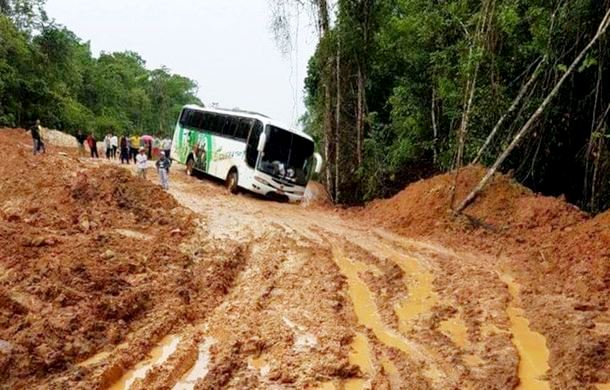Draft Law PL 9464/2018 by Mr Ricardo Tripoli prohibiting export of live cattle/amp
HUMAN SYNTHESIS
email: humansynthesis0@gmail.com

CHAMBER OF DEPUTIES
OFFICE OF FEDERAL MEMBER RICARDO TRIPOLI
Draft Law PL 9464/2018 by Mr Ricardo Tripoli prohibiting export of live cattle
February 2018
The National Congress decrees:
Art. This Law provides for the export of live cattle and other measures.
**Art. 2. The export of live cattle by sea transport, for all purposes, and under any pretext, is prohibited.**
Art. 3º. This Law shall become effective on the date of its publication.
Justification
To regulate or prohibit a practice involving animals and which imports in economic activity, whose domestic or international dividends may be affected, commonly slip in a situation of tense apprehension. However, globally, compliance with good management practices and the guiding principles of animal welfare measurement are factors that are linked to the respective commercial activities, including foreign exchange variation and directing the success of international trade relations. Today, based on international technical and legal standards, animal welfare is a conditioning factor for the permissibility of a particular practice or activity.

CHAMBER OF DEPUTIES
OFFICE OF FEDERAL MEMBER RICARDO TRIPOLI
Brazil assumes the leading role in the production and export of meat. According to CNA, national beef exports grew 737% in 14 years, from US $ 779 million (R $ 2.7 billion) in 2000 to US $ 6.4 billion (R $ 22.2 billion) , in 2014.
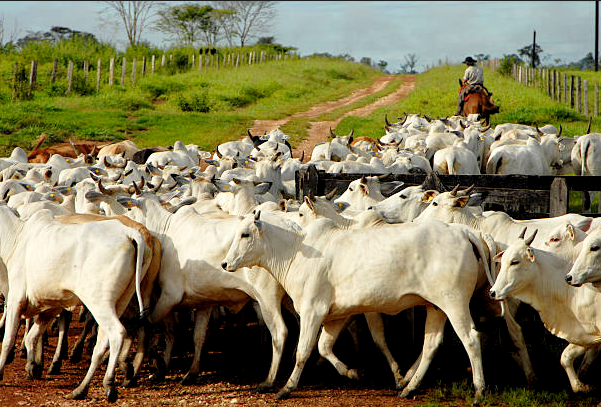
Brazilian cattle fazenda
Between January and October 2017, the exchange revenue from the export of meats, in general, would have represented US $ 13 billion, according to data from Agrolink (11/13/2017). Of this total, the beef sales specifically reached US $ 4,126 billion that year (canalrural.com.br, 11/02/2017).
Exports with livestock, or live cattle, show revenue of US $ 124 million. That is, the billing represents 3% of the total. The equation that follows the economic spreadsheets takes on a new direction and two strands to be appreciated. First, it is necessary to evaluate whether this percentage brings greater or lesser gains compared to the generation of jobs, promotion to the Brazilian industry and collection of taxes provided by the export of processed or in natura meat.
And, properly, it is necessary to evaluate the validation and acceptance of the activity with analysis regarding compliance with international animal welfare standards. In this respect, the equation is certainly not adequate.
Brazil rules internally the market for the compliance with the norms and principles of animal welfare, demanding the guarantee of fulfilment in the whole productive chain. From farms to fridges. The establishment, transport, handling and slaughter of animals must follow strict criteria to ensure animal welfare and food safety.

CHAMBER OF DEPUTIES
OFFICE OF FEDERAL MEMBER RICARDO TRIPOLI
The training of farm staff and refrigerators is a significant differential in the country and reflects directly on the Brazilian trade balance, as it guides international trade relations. Transport and pre-slaughter management are associated with a series of stressful animal events that compromise both welfare and meat quality causing economic damage to producers and slaughterhouses.
Among the major problems faced in cattle breeding are: dystocia; weaning poorly without breeding and gradual separation in pasture and corral; mastitis; laminitis; metabolic diseases; malnutrition; social stresses; bad deed done; castration without anesthetic use; marking; space constraint; poor environment in dirty facilities and facilities, with inappropriate floors and tight spaces; inappropriate displacement allowing excessive vocalization by panic and stress, slipping, bruising, falls; handling with aggressions (screams, punches, kicks) and use of electric baton; and, alarmingly inadequate transport, with water suppression, thermal discomfort, physical exhaustion, with injuries, mutilations, trampling and death. Transport is one of the stages in pre-slaughter and slaughtering with higher levels of animal welfare.
_In spite of Brazilian laws for protection of farm animals, scenes in the above video are not un-common._The measurement of animal welfare indexes, auditable and subject to corrections in cold storage facilities, on farms and during inland or fluvial transportation, demonstrates the need for improvement, suspension or abstention of the activity.
In order for animals to be transported by fluvial means, normally prior to embarkation to the ship, long-distance land transport, in which there are usually no alternative routes, for the transport of animals occurs. There is no infrastructure to disembark the animals in case of emergency. Even short-haul or medium-distance journeys matter in conditions of animal abuse,

CHAMBER OF DEPUTIES GABIN
The precariousness of the route, the animals arrive to exceed 12 (twelve) hours in physical exhaustion and other deprivations. According to the report Animal Welfare in the Maritime or River Transport of Live Animals - Sectoral Dialogues European Union / Brazil, published by the Ministry of Agriculture, Livestock and Supply (Brasília, 2016), the Brazilian road network has more than 1.72 million of kilometers, with only 12.4% of them paved (CNT 2015). According to the National Transport Confederation, only 12.5% of the paved roads are in excellent condition and 30.2% in good condition.
In some states, such as Mato Grosso, for example, where 19 million cattle are slaughtered (the second largest herd in the country), the road network consists mainly of unpaved roads, causing serious problems during rainy seasons, with significant increases in costs in the handling of loads and serious animal welfare problems. In a survey of the routes used to transport cattle to the Port of Barcarena (PA), it is verified that the routes evaluated by the CNT mostly have poor conservation status and the unpaved conditions still worse.
The roads, especially those that give access to the farms, are usually precarious. Most highways are also in a precarious condition. All animal management, from birth, must meet welfare standards, which do not prevail only at the time of slaughter (desensitization and bleeding) but at all times that precede it. Regarding the handling of slaughter, bleeding, specifically in Brazil, cannot be performed without previous desensitization, being prohibited the use of sable or mallet or any other cruel means. The desensitization is performed by a mechanical method that consists of the use of a pneumatic percussion gun or penetration and only after the demonstration of its effectiveness (visual signals such as the absence of spontaneous blinking and lack of breathing) the animal may follow the bleeding.
The export of live cattle by sea transport does not make it possible for such animal welfare standards to be met, even if they form part of a bilateral contract, which extends beyond the exporter to the shipping companies. The export of live animals does not meet the requirements of the Brazilian norms nor even the OIE Terrestrial Animal Health Code, of which Brazil is a signatory. Live exported animals suffer from the pre-slaughter process, due to the agonizing effects imposed by the terrestrial and sequentially maritime transport, and slaughtered with extreme cruelty, without any previous desensitization procedure.

There are 120 livestock cargoes registered in the International Maritime Organization, representing only 0.12% of the world transport fleet. Many of the vessels that operate are not built for this function and are therefore adapted, which compromises the operationalization of the activity and above all the animals. Many are obsolete vessels with structural problems. In addition to the stress of land transport to the ports, the displacement and landing already compromise the animals too much, due to lack of management, aggression and high density. The martyrdom inside the ship is evidenced in innumerable reports, such as the Export of Live Animals Report by veterinarian Dr Lynn Simpson (forumnanimal.org).

CHAMBER OF THE MEMBERS OF THE FEDERAL DEPUTY BOARD RICARDO TRIPOLI
In fact, livestock vessels have an inherently stressful and risk-free environment for the animals. The presence of veterinarians is not able to prevent the suffering of animals, and the ability of these professionals to identify, reach and treat injured or sick animals is limited as tens of thousands of animals share the same vessel. Only in the Australian livestock trade, more than 200,000 animals have died en route to their destination since mortalities began to be recorded.
The export of live cattle by sea transport imposes extreme and unimaginable suffering on the animals, operating in violation of the OIE-World Animal Health Organization's Terrestrial Animal Health Code, of which Brazil is a signatory which, in section 7.1.2.2, establishes that "the internationally recognized Five Liberties (free from hunger, thirst and malnutrition, free from fear and stress, free from physical and thermal discomfort, free from pain, injuries and illnesses, and free to express their natural behavior provide valuable guidance for the animal welfare.
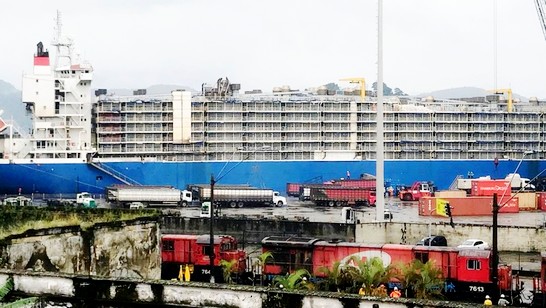
"The" five freedoms "cited are compromised due to the management, infrastructure and risks inherent in such transport. Injuries that require animals to be slaughtered are very common, such as broken limbs and septicemia due to abrasions prolonged on the legs, caused by hard floor and absent the substrate (bed) for the animals to lie down. Animals do not remain free from hunger. Starvation can occur even though the adequate food is available, as cattle are not given sufficient time to get accustomed to the available food, which is different from that consumed on the farms of origin. The animals do not remain free from thirst because the crew cannot keep the troughs functional and sanitized due to excess faecal waste.

CHAMBER OF THE DEPUTIES FEDERAL DEPUTY BOARD RICARDO TRIPOLI
The animals suffer from the thermal discomfort. Many die from stress from enclosures, corrals, and densified bays, summer conditions and faulty mechanical ventilation, or in poor condition. Animals with a body temperature of 40 degrees Celsius were recorded. In conditions of hyperthermia, the animals go to die, which can occur immediately, or in a few days. Overcrowded bunkers reduce the animal's natural ability to dissipate heat through low airflow, which contributes to the thermal discomfort in standing export cattle vessels and the increase of deleterious gases such as ammonia.
The higher the density of animals, the higher the risk of thermal discomfort and the possibility of death from heat stress. In addition to the noisy and unnatural environment on board, the animals also suffer serious injuries caused by the stormy sea, which causes them to collide, inside their confinement areas, against walls and grids. Many are self-injuring due to the stress of confinement, beating against solid objects such as walls, rails, and beams at low heights, causing them injuries and injuries. They also react to fear and stress by becoming anorexic, coming naturally to death, or needing emergency slaughter.

Regardless of the type of floor used on the vessel, it quickly turns into a thick layer of faeces and urine that concentrates moisture and spreads pathogens. The physical environment on board all livestock freighters do not allow rest conditions. Fecal accumulation and water in the pens imply that there are dry and comfortable places for the animals to lie down, leading to chronic musculoskeletal fatigue and low immunity. Deaths from suffocation are common since animals fall on top of others due to extreme fatigue.
The natural methods that animals dispose to dissipate body heat are impaired by the presence of a thick layer of faecal contamination on the skin of the animals, called "faecal jacket", which develops as a result of the conditions of decks and restrictions for cattle laundering. This results in faecal contamination that completely covers the animal, as well as contaminating the infrastructure such as drinking fountains and feeders. Although the OIE Code states that animals must be observed, such a directive is impossible to enforce, not only because of the high number of heads, but also because many are already found to be at an advanced stage of disease or injury as animals weak or afraid "hide" in the later corners of the enclosures, away from the troughs and people. Accidents involving live cargo vessels are common and tragic.
In October of 2015, the Lebanese ship Haidar shipwrecked, in the northeast of Pará, causing the death, by drowning, of five thousand cattle trapped in the boat. Those who were saved were quartered on the banks of the river and the other carcasses polluted the local environment for months. In 2009, the MV Danny F2 ship was shipwrecked in Lebanon, resulting in the deaths of eighteen thousand cattle and ten thousand sheep, who were on board. In 1996, a fire in the MV Uniceb resulted in the loss of thousands of sheep on board. And the practice still causes water pollution. There are complaints about the release of animal waste directly into the sea.
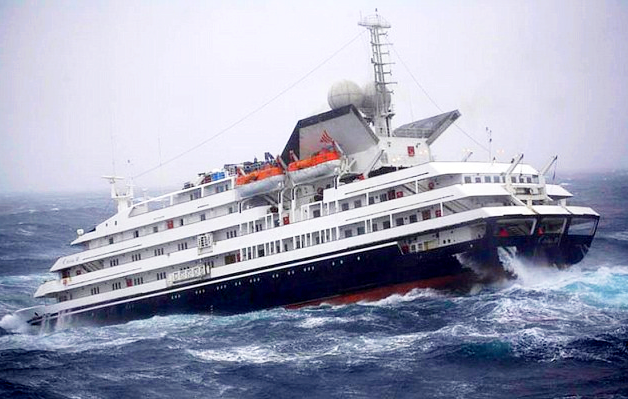
Here is a similar-shaped hull in moderately rough seas. Imagine the movements of the cattle.
In confinement, an adult steer produces, on average, 23.5 kg of faeces and 9.1 kg of urine. If we consider the average of 20 kg of faeces and 8 kg of urine/day per animal in the transport of 20 thousand heads, at least 560 tonnes of waste will be produced daily. And on a 20-day trip, 11,200 tons of waste. According to reports, most of the vessels can not store this huge amount of manure, as well as the carcasses of animals that die or are killed, which would result in a strong maritime pollution, affecting the fauna and the coral, damaging fishing or contaminating fishes and

CHAMBER OF THE DEPUTIES FEDERAL RICARDO TRIPOLI CABINET
threatening public health due to the action of the tides or the possible consumption of contaminated seafood. The export of standing cattle constitutes extreme, uncontested and inherent cruelty to the practice. There is no way to alleviate the suffering imposed on bovine animals in view of the number of heads, temperature conditions, rough seas, and faeces that cover the animals, their water and their food. Even veterinary assistance is rendered impossible by the large number of heads.
Nevertheless, the slaughter of the animals in foreign soil disrespects any practice of animal welfare. Without infrastructure, slaughterhouses or standards for slaughtering, in some countries of the Middle East and the African continent, the animals are slaughtered as soon as they landed, still fainting and immersed in mud composed of urine and faeces, on the banks of the port. And they agonize to the point of full bleeding.
This fact is corroborated by the information disclosed by one of the largest exporters / transporters of live cattle, which evidences as main factors of the export of live cattle the fact that there are preferential countries for domestic slaughter for religious reasons, cultural or consumption habits", because of "insufficient cold chain or high cost" and "import tariffs are lower than those applied to fresh meat".
In this sense, Brazil loses control of the animals, which should protect and for which should provide life and death worthy, in accordance with current norms of ethical and legal order. Brazil is responsible for regulating the sector strictly and requires that international norms and treaties be followed in strict compliance with sanitary, environmental and animal welfare rules. In the beef market, there are certifications that aim to ensure that animals are exempt from practices that may cause them suffering, or that compromise human health and environmental safety. begins in the farms of breeding and extends for the transport until the slaughter, that follows rigid procedure, with prior desensitization to the sangria.
Such data expose Brazil's incoherence in allowing the export of live animals suffering agonizingly in the holds of ships for periods of 15 to 40 days, depending on the country of destination. It is not conceivable that animals born and raised on Brazilian soil are cloistered in foreign vessels to be martyred, in flagrant violation of national laws. The national legislation protects the animals even, by constitutional norm, and it is not permissible that the export of live cattle can be placed to the margin of the norms that protect them, disregarding that the animals are sentient creatures.
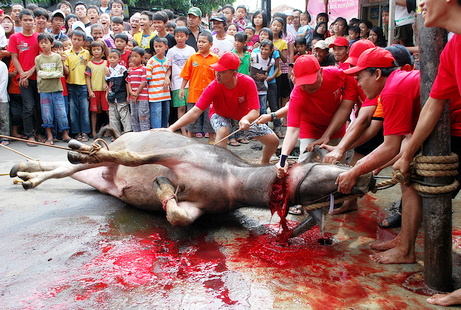
Public, Muslim Halal slaughter ceremony while the bull calves are fully conscious.
The Constitution of the Republic, in its article 225, paragraph 1, item VII, is clear when it is incumbent upon the Public Government to prohibit practices that subject animals to cruelty. In addition to being unconstitutional, the conduct described above subsumes the penal type contained in article 32 of Law 9605/98, which typified the environmental crime of ill-treatment of animals. Under all the methodological prisms of approach to measuring animal welfare indices, such as: scientific, technical or social, it is not conceivable that said practice can remain authorized.
Thus, after analyzing the vast literature on the subject, numerous articles published and gathering information with industry professionals, experts and authorities, it is concluded that the construction of the text of this proposal could not select or exempt from the prohibitive norm the transportation of livestock by purpose or destination. Therefore, not only the animal to be transported for fattening and slaughter purposes but also the one transported for herd replacement purposes must be protected from the taxes imposed by the slaughterhouse. export, in a broad and generic way.
Nevertheless, the export of live animals, regardless of this initiative of the federal legislature, must certainly be the subject of extensive study by the Federal Executive and the authorities and professionals involved, since silence in international contractual clauses of minimally identical requirements is not allowed to those practiced and required for the domestic market and globally marketed, such as European Union and United States regulations, among other markets, depending on technical, legal and ethical guidance.
The countries that import beef and processed meat products from Brazil do not maintain their trade relations with the country or with a particular slaughterhouse if health, environmental, fiscal and even animal welfare standards do not exist. be fulfilled and fulfilled. Due to all the above, serious environmental compromise, animal suffering and incipient gains, - considering the total percentage of exports in the sector -, it is agreed that the activity should be impeded in the national territory.
Sala das Sessões - Sessions Room, on February 05, 2018.
Ricardo Tripoli receives IBAMA medal:
Government agrees to review of Law
Commentary:
Administrator
HUMAN SYNTHESIS
All articles contained in HUMAN-SYNTHESIS are freely available and collected from the Internet. The interpretation of the contents is left to the readers and do not necessarily represent the views of the Administrator.
